Are greenhouses the wave of the future for produce farming? Many experts think so and it might be time for you to add a managed greenhouse to your agriculture portfolio.
Greenhouses Have a Long History
Greenhouses have been around for a very long time and started out as “hot houses” in northern climates. The structure either allowed you to start plants early, thereby achieving a longer growing season or even the ability to grow produce year-round by adding a heating system. Crops that were once strictly seasonal became viable year-round in a greenhouse environment.
For centuries, greenhouses were very popular with physicians growing herbs in Korea, hobby farmers in England and elsewhere around the world. They actually first came into use in Roman times when vegetables were grown in wheeled carts and moved into the sun during the day and back under shelter at night to preserve the heat in the soil.
As the promise of the concept became more widespread, attempts were made at keeping them heated in the winter using wood-burning stoves and even pipes carrying hot water from thermal springs. Although these structures range in size from small sheds to industrial-sized buildings, as technologies and glass production became more advanced, so did greenhouses. The Palace of Versailles is a good example. Built during the 1680s, the Versailles greenhouses measured more than 150 meters long, 13 meters wide, and 14 meters high.
Technologically Advanced and Responsive
As times have changed, the technology and uses for greenhouses have also changed. The amount of available arable land continues to diminish, so greenhouse farming makes a lot of sense since the amount of produce grown per hectare is often vastly greater than traditional open-field farming.
For instance, greenhouses are perfect for vertical farming; training plants on a lattice system or for crops like herbs or microgreens grown in stacked trays with special lighting systems. This type of farming allows for more produce to be grown in smaller spaces as well as allowing it to be grown closer to the point of consumption.
The Netherlands was an early adopter of greenhouse technology on a large scale and is now the second-largest exporter of food on the planet. Bear in mind that the amount of acreage used to grow corn in the United States is eleven times larger than all of Holland! This small country is a great example of applied technology and the potential for greenhouses.
During times of drought, greenhouse farming thrives because water is typically recycled. Additionally, the common drip-style watering systems put the water where it is needed the most… on the roots of the plant. Israel is another country focused on cutting-edge agricultural technology; they have turned vast expanses of desert into verdant fields of crops and huge greenhouse farms.
Sometimes referred to as controlled environment agriculture, greenhouse production allows for just that… highly controlled environments. Pests are easier to manage, producers aren’t as dependent upon the weather, the effects of both cold and hot weather can be mitigated, humidity can be regulated where necessary and process automation is easier to achieve.
From the perspective of a produce seller, a big advantage to the more intense crop management found in most greenhouses is more uniform crops in terms of size and color. Take a good look at your local grocery store produce section next time you go shopping. With the possible exception of root vegetables like potatoes and onions, most fruits and vegetables are more or less uniform in size. This is very important for the biggest supermarket chains, especially in North American and European markets.
Greenhouses Provide a Scalable Alternative
In some ways, the greenhouse is just one of many agricultural technologies that allow farmers to produce more with less – less water, less fertilizer, less energy use and less waste. In addition, environments that might support one or two crops in a year can now yield three and four crops per year. More yield from the same plot of land means greater profits.
From a labor efficiency standpoint, greenhouses often allow for lower labor costs. While greenhouses are more intensely managed than field crops, managing aisles of plants is quicker and easier than walking or driving through far-flung fields. The proximity of one plant to another means each employee can touch more plants in a much smaller time.
Nick Houshower of private equity firm Equilibrium, a major investor in the greenhouse industry, recently said that, “Once you go into a greenhouse or a vertical farm, you have the ability to produce on a reliable basis and forecast production on a reliable basis.”
“That’s important for consumers, that’s important for retailers, and at the end of the day it’s important for us as investors because it allows me to look at this as not cyclical outdoor field agriculture but something that feels a lot more like infrastructure or real estate.”
Houshower went on to say that you need ten acres minimally to be economically efficient. He added, “(When you go in a greenhouse), it’s Groundhog Day. It’s the same weather every day.”
The Bottom Line?
With the increasing application of technology to an ancient industry, greenhouses are indeed the future of farming.
Whether you buy the land or have a leasehold, the combination of lower risks, greater yields and increased efficiencies will provide strong profits for those who buy in ahead of the curve.


